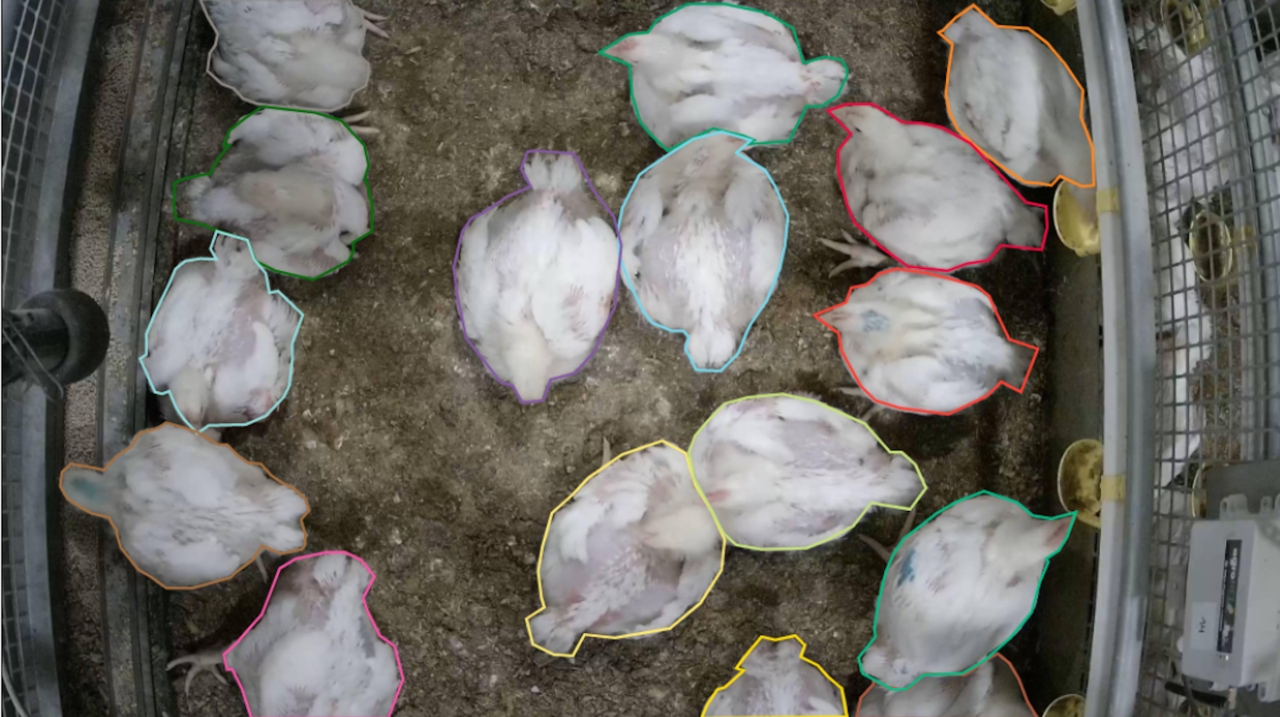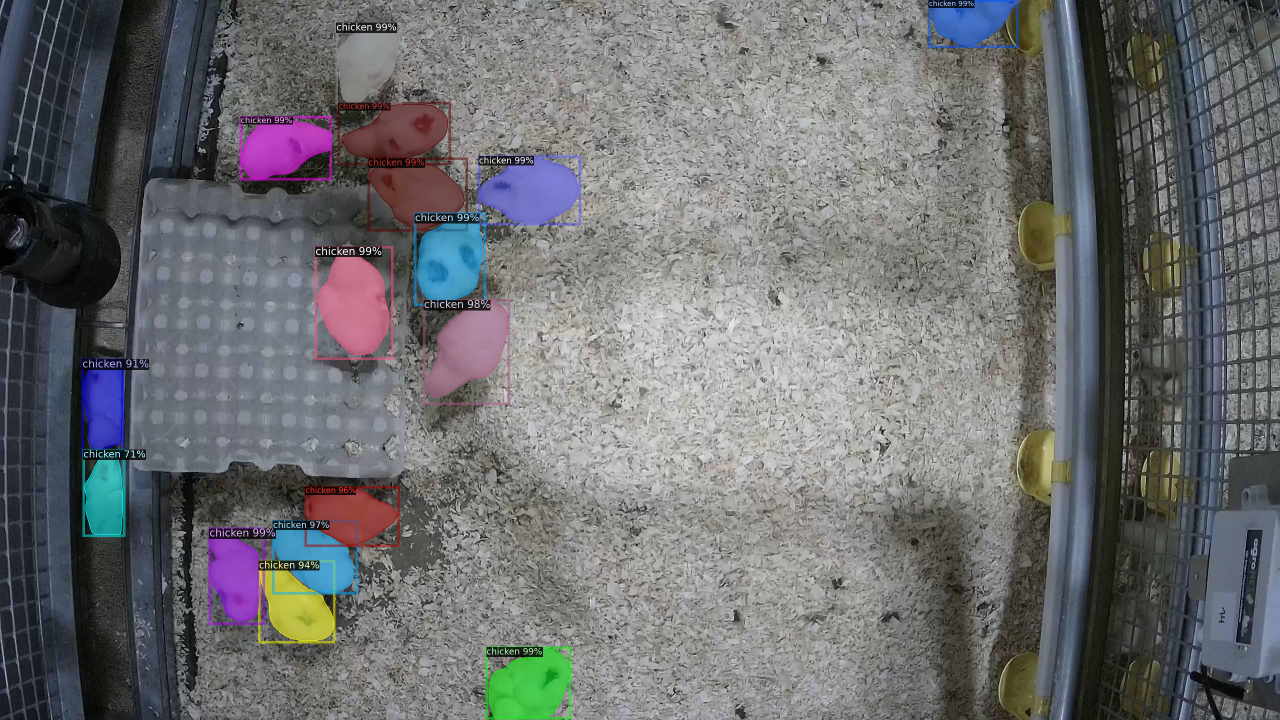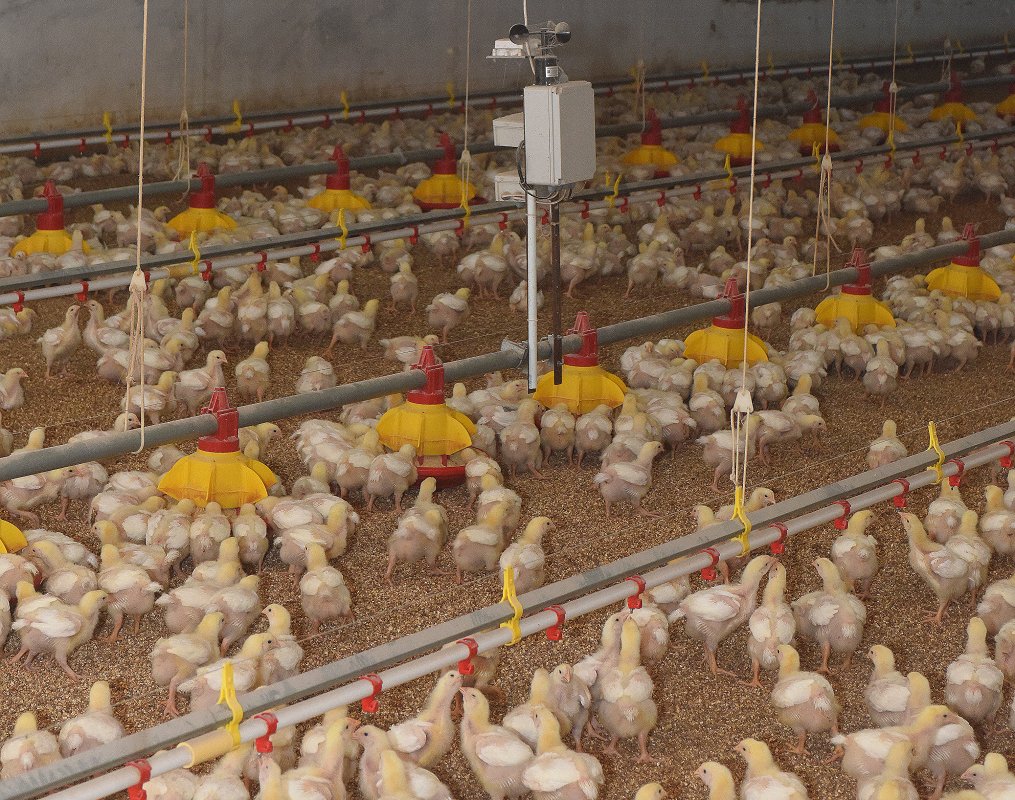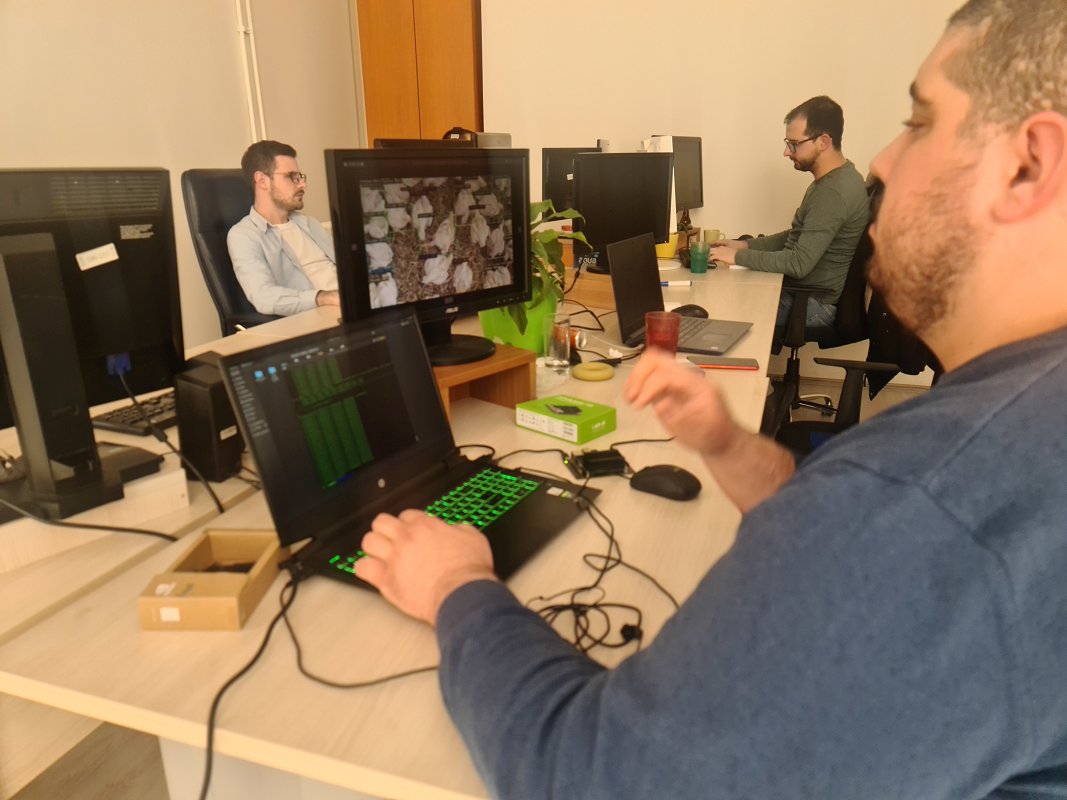AI/ML Computer Vision for the Next Generation Poultry Farms
Researchers from this consortium have engaged a large number of poultry farms of different sizes. The main goal of the engagement was to understand their business challenges and to present an IoT based poultry farm management solution, supported by a set of sensors for environmental monitoring. The use of HPC and deep learning AI waas used to create prediction models that can be deployed on the edge devices equipped with camera sensors for the use in IoT/AI solutions in the poultry sector.
SECTOR: Agriculture
TECHNOLOGY USED: HPC, Machine Learning, Edge Computing
COUNTRY: Montenegro
The challenge
Monitoring chickens on large farms is highly labor intensive and costly, and as representatives from Radinovic Company and Franca noticed, may hinder the productivity of staff members for other tasks. Nevertheless, it is essential to ensure animal well-being and humane food production. Raising chickens, means closely monitoring environmental conditions. Measuring air temperature, air humidity, CO2, and ammonia levels are required as a basis for a successful production. Additionally, having insights into chicken body temperature, behavior, and growth, provides the possibility of undertaking adequate measures on time. In order to help farmers accomplish this, DunavNET addressed the monitoring of poultry on large farms with a modern digital farming platform based on Internet of Things (IoT) technology. DigitalSmart and DunavNET gathered around the question of how to utilize artificial intelligence (AI) and machine learning (ML) to develop computer vision sensors that can monitor the number of chickens, assess their weight, detect dead chickens. This can be achieved with the help of cameras installed on poultry farms and edge AI devices with integrated ML prediction models. However, training, selecting, and calibrating the prediction models that can be ported onto edge AI devices using a standard personal computer was extremely slow, tedious, and therefore not feasible without access to high-performance computing.
The solution
Artificial intelligence and machine learning algorithms were used to create prediction models such as counting chickens, detecting dead chickens, and estimating their weight and size, which could indicate the appearance of certain diseases. DigitalSmart and DunavNET then utilised HPC to efficiently apply deep learning to train and later calibrate these prediction models. This process led to the creation of a new type of precision agriculture sensor that combines cameras, edge computing, and an IoT platform in order to support the next generation of poultry farms. HPC provided a crucial, over 10-fold improvement in time savings for the development of custom prediction models. This improvement is pivotal because models are calibrated for specific end-users and achieve an accuracy of over 90% for chicken detection and segmentation. These models are subsequently ported into edge IoT devices equipped with camera sensors. Such IoT devices, enhanced with edge AI capabilities and new prediction models, represent new building blocks for advanced smart agriculture solutions for the poultry industry.
Business Impact
The smart agriculture solution developed within this experiment could boost the productivity of poultry farms by potentially reducing both manual labor costs and chicken mortality rates by about 10% each. For SME farms such as Radinovic Company and Meso-promet these savings could exceed hundreds of thousands of euros annually. This is accomplished because assessing the weight of chickens in real-time increases the uniformity of the finished product and reduces the impact of stress on both the chickens and manual labor. Furthermore, real-time insight into poultry barns allows for improving disease management due to early detection.
HPC provided the technology organisations DunavNET and DigitalSmart needed to develop smart agriculture solutions quickly and efficiently using machine learning and computer vision, in this case for the needs of the poultry industry. The computer kit has become a part of the PoultryNET platform offering, and there is an opportunity to sell such components to third-party vendors active in the market of smart agriculture solutions.
Benefits
- Results permit the end user chicken farms to reduce by 10% both manual labor costs and chicken mortality rate, saving hundreds of thousands of Euros annually.
- More than 10-fold speed-up of generating predictive models with HPC empowers SMEs DigitalSmart and DunavNET to quickly commercialise customised smart agriculture solutions for customers.
- Much quicker (minutes vs hours/days) detection of disease or abnormalities leads to improved animal well-being and better agri-food product quality due to improvement of disease prevention and early detection.
- Better management of carcass disposal, dead chicken detection, and lower greenhouse gas emissions by optimising production conditions.
Organizations involved:
End users: Radinović Company and Meso-Promet Franca
Domain Expert: University of Donja Gorica
ISV: DunavNET
HPC & AI Expert: DigitalSmart
Partner University of Donja Gorica - UDG is part of the NCC Montenegro.





